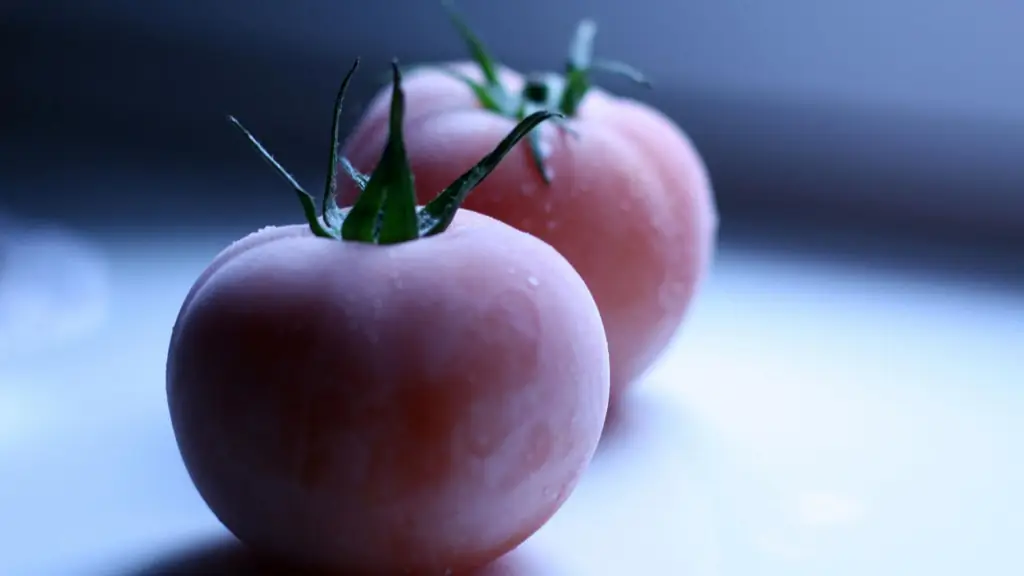
Table of contents:
- Author Bailey Albertson [email protected].
- Public 2024-01-17 22:26.
- Last modified 2025-06-01 07:32.
How and what to spray tomatoes during flowering

Finally, the carefully grown tomato seedlings have taken their place in greenhouses or in prepared beds. The weather did not disappoint, and now the first flowers begin to appear. Now the main task of the gardener is to provide tomatoes with the necessary nutrients. This is necessary both for the formation of the ovary and for the successful maturation of the future harvest. Foliar feeding of plants will help in this. In addition, timely spraying of tomatoes will protect the future harvest from possible pests and diseases.
Content
-
1 Why spray flowering tomatoes
1.1 We spray correctly
-
2 What is used for spraying
- 2.1 Boric acid
- 2.2 Superphosphate
-
2.3 Biostimulants
1 Photo Gallery: Popular Growth Stimulants
- 2.4 Chelates
-
2.5 Iodine
2.5.1 Video: Processing tomatoes with milk and iodine from late blight
- 2.6 Ash
- 2.7 Yeast
- 3 How not to harm tomatoes
Why spray flowering tomatoes
It is believed that spraying garden plants is most often carried out in order to protect them from pests and diseases. But during the period of flowering and ovary, tomatoes are most in need of mineral and organic substances. It is foliar feeding that can provide them. Such processing is a kind of ambulance for plants. Indeed, in this case, the nutrients immediately, passing through the leaf shell, begin to work. And there is no need to wait until they dissolve in the soil and get to their destination through the root system. Timely and regular foliar application of both complex inorganic and organic fertilizers will help the colored bushes to form an ovary faster and provide the necessary resources for the subsequent development of fruits. In addition, sometimes with an excess or deficiency of certain elements in the soil, tomatoes need targeted assistance.

The result of foliar feeding will be noticeable within a few hours
How to understand what exactly they are missing? To answer this question, it is often enough to take a closer look at the tomato beds.
- If your plants stretch out before our eyes, featuring spreading bushes, which, unfortunately, are almost devoid of flowers and ovary, we can assume that this is a consequence of excess nitrogen in the soil. The introduction of phosphorus and potash fertilizers will help to correct this deviation.
- The lack of phosphorus can be signaled by the purple tint of tomato leaves.
- Small shoots on plants indicate a lack of copper and sulfur.
- If the leaves bend down and the top of the bush curls, zinc deficiency can be suspected.
- Curled down pale green leaves of young plants and black dots can signal a lack of boron.
- Tomato leaves, which lack iron, begin to sag and turn yellow at the ends.
We spray correctly
Despite the fact that spraying tomatoes is a seemingly elementary procedure, it also requires compliance with certain rules. First of all, you need to listen to the weather forecasters. For spraying, a cloudy, cool day is suitable. Rain in this case will be superfluous, since it will simply wash away all the fertilizers. Foliar dressing is carried out in the evening when evaporation is minimal. Each plant is sprayed generously, wetting the leaves from both the top and bottom.
What is used for spraying
So, we have determined that it is still necessary to spray tomatoes during the flowering period. The next question is what means to use for this.
Boric acid
Many people are familiar with the sad picture when a tomato bush sheds unopened flowers. In such cases, one can only dream of an ovary. Boric acid will help correct the situation. This tool is one of the most affordable and popular among gardeners. Foliar dressing with boric acid solution has been used since the flowering of the second and third brushes of tomatoes. Such spraying will contribute to pollination, the formation of new ovaries, and in already fruiting plants it will help to improve the taste of the fruit.
To prepare a solution, 10 g of boric acid is diluted in 1 liter of hot (70-80 ° C) water and the volume is brought to 10 liters. You can treat the plant with such a tool every 10 days.
The concentration of boron in one bush may not be the same, and even if the roots do not lack this element, the upper shoots and inflorescences may need additional feeding

Boric acid when spraying tomatoes stimulates the formation of an ovary
Superphosphate
This well-known drug will help to support the plant during the flowering period. For this, 50 g of dry matter is dissolved in 10 liters of hot (70-80 ° C) water. The resulting product is cooled and the plants are sprayed at the rate of approximately 100 ml per bush.
If you see that tomatoes are clearly deficient in phosphorus, you need to use a more concentrated solution. For its preparation 20 tbsp. l. the granulated preparation is poured into 3 liters of boiling water and, stirring occasionally, leave for a day. For the working solution, add 150 ml of concentrate to a 10-liter bucket.
Biostimulants
In recent years, many plant growth-promoting drugs have been found on the shelves of hardware stores. Here are just a few of them:
- Ovary;
- Gibbersib;
- Pollen;
- Tomaton.
These products contain gibberellins - substances that stimulate the yield and quality of the fruit. The rates of the drug for the preparation of solutions and the frequency of their use are prescribed in the instructions.
Photo gallery: popular growth stimulants
-

Biostimulator Tomaton - With the help of biostimulants, you can preserve and increase the amount of ovary, accelerate the ripening of fruits
-

Growth Regulator Gibbersib - Universal drug Gibbersib will help during flowering and ripening of the crop
-

Fruiting stimulant Ovary - Fruiting stimulant The ovary will ensure the formation of an ovary even in adverse conditions
-

Flowering stimulant Pollen - The Pollen preparation is universal and can be used not only for tomatoes, but also for other vegetables.
Chelates
This is another type of fertilizer that is instantly absorbed by foliar feeding. Chelates can contain both individual elements and a whole complex consisting of macro- and microelements. They are considered completely safe. The only negative is the rather high price.
Iodine
In order to restore the balance of trace elements, ordinary iodine can also be used. To prepare a solution, 250 g of low-fat milk are diluted in 1 liter of warm water and 5 drops of iodine are added. When foliar treatment with this drug, it is important not only to observe the dosage during preparation, but also to use a fine spray so that large drops do not fall on the leaves.
Video: Processing tomatoes with milk and iodine from late blight
Ash
To prepare an ash solution, 300 g of dry ash is sieved well and, stirring, is poured into 3 liters of water. For half an hour, the suspension is boiled, after which its volume is brought to 10 liters, the shavings of half a piece of laundry soap are added and insisted for 24 hours.
Spraying with such a solution will not only provide the tomato with the necessary minerals, but also protect the plant from pests and such a common disease as late blight

Ash will help not only feed the plant, but also protect it from pests
Yeast
This is another folk remedy that can be used both as foliar feeding and as plant protection against fungal diseases. The fact is that yeasts easily dominate their fellows, not giving them a place to breed. But it will take some time and effort to prepare the working solution:
- To begin with, 3 liters of water heated to 35-38 ° C are poured into a 10-liter bucket. The temperature should not be too high, as this will prevent the yeast from surviving. If it is less, then the substance simply will not work.
- Dissolve 10 tbsp in water. l. sugar and a 10-gram bag of dry yeast (you will need about 2 times more fresh ones).
- The mixture is left to ferment for 5-10 hours, stirring regularly.
- To prepare the working solution, add 3 liters of starter culture to 7 liters of settled water.
Foliar dressing with such a product can be carried out every 2 weeks.
How not to harm tomatoes
The flowering time of tomatoes requires increased plant nutrition. But there are also exceptions to the extensive list of substances necessary for them. It is during the flowering of tomatoes that nitrogen fertilizers should not be used. If this condition is not met, all the power of the plant will be directed to the formation of shoots, and the flowers and ovary simply will not develop.
Popular wisdom says that the day feeds the year. This fully applies to the flowering time of tomatoes. Correct spraying of plants during this period will help restore the deficiency of nutrients and minerals and set the tomatoes for a bountiful harvest. Another important goal of such treatments is to protect plants from diseases and pests. And there is no need to be afraid of damaging the tomatoes. If you strictly follow the instructions, then you don't have to worry about the quality of the future harvest.
Recommended:
How To Freeze Tomatoes For The Winter Fresh And Is It Possible To Do It + Video

Freezing options for fresh tomatoes in the freezer. What fruits to choose for this, how to use after defrosting. Video
Is It Possible To Get A Haircut During Pregnancy, Why Is It Considered That Pregnant Women Cannot Be Cut

Is it possible for pregnant women to cut their hair. What do doctors and hairdressers think about it? How to cut the hair of expectant mothers are popular. Hair Care Tips
Pruning And Feeding Geraniums In Spring For Lush Flowering

Timing of cutting geraniums, instructions, photos. How to feed immediately after pruning: store fertilizers and homemade recipes. Blooming feed
Salt From Late Blight On Tomatoes: How To Properly Process Tomatoes

What is the mechanism of protection of tomatoes from late blight with the help of table salt. How often should plants be treated, what should be the concentration of the solution
How To Feed Peppers During Flowering And Fruiting: Mineral, Organic And Folk Remedies

Top dressing suitable for pepper: mineral and organic fertilizers, folk remedies - description, frequency of application. Reviews and recommendations of gardeners
